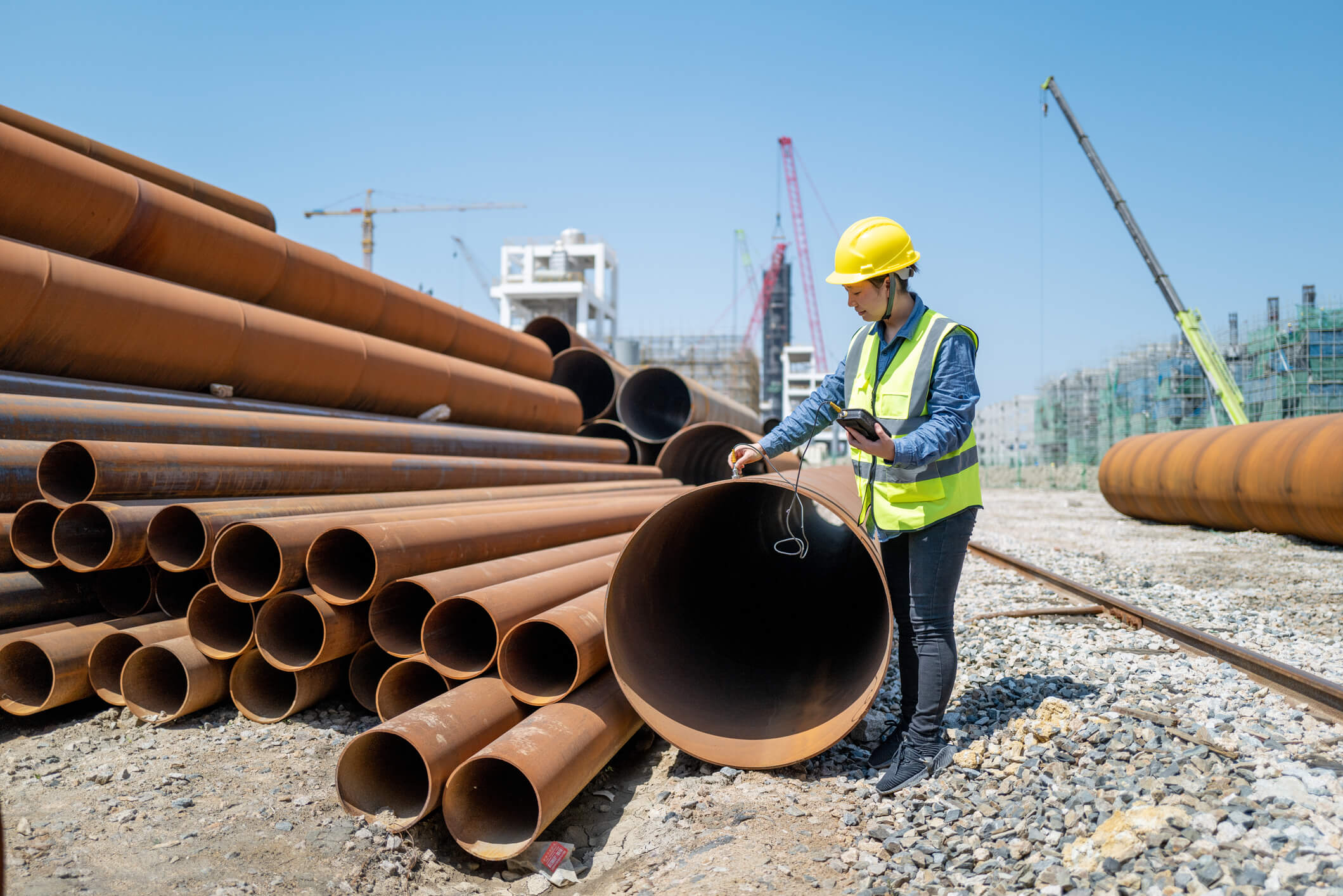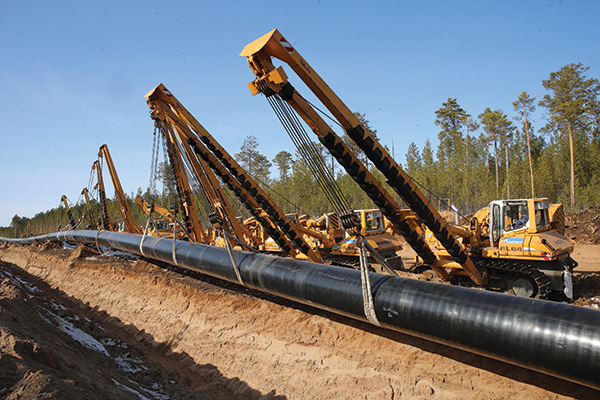Creek Pipe Midland TX: The value of incident drills
Wiki Article
Recognizing the Secret Attributes of Pipeline Solutions and Their Effect On Effectiveness
Pipeline services play a necessary role in different sectors, influencing functional efficiency noticeably. Key features, such as sophisticated monitoring technologies and maintenance techniques, are crucial for minimizing downtime. Additionally, governing compliance warranties safety and security and environmental management. The interplay in between layout, framework, and financial factors can make complex these processes. Comprehending how these components impact total performance increases essential inquiries regarding finest techniques and future growths in the area.The Role of Innovation in Pipeline Surveillance
As advancements in modern technology continue to evolve, the significance of effective pipeline tracking has actually ended up being significantly noticeable. Modern pipeline systems depend on sophisticated monitoring devices that enhance functional efficiency and safety and security. Technologies such as real-time information analytics, sensing units, and drones provide operators with prompt understandings into pipe problems, enabling them to detect leaks, corrosion, and other prospective problems before they escalate into substantial troubles.Additionally, the integration of Internet of Things (IoT) tools has actually transformed conventional monitoring methods, permitting continuous monitoring and automated reporting. This proactive strategy not just lessens risks however likewise optimizes upkeep schedules and source appropriation. Furthermore, advanced software program platforms promote information visualization and interpretation, encouraging decision-makers to respond quickly to anomalies. Jointly, these technical technologies not only improve pipe stability however additionally foster environmental stewardship by mitigating the prospective effect of leaks and spills.
Maintenance Approaches for Enhanced Performance
Effective maintenance approaches are important for optimizing pipe effectiveness. Implementing predictive maintenance strategies, adhering to routine examination protocols, and establishing durable emergency response plans can greatly improve functional dependability. These strategies not only lessen downtime yet additionally contribute to the general safety and security and integrity of pipeline systems.Predictive Upkeep Strategies
Predictive upkeep strategies are increasingly acknowledged for their capability to enhance operational effectiveness in pipeline services. By leveraging data analytics and checking technologies, these techniques allow operators to expect devices failings before they occur. This positive technique lessens unintended downtime, decreases upkeep expenses, and prolongs the life expectancy of important properties. Sensing units and IoT tools play a crucial function in gathering real-time data, enabling the analysis of devices health and wellness and efficiency fads. Equipment understanding formulas assess this information to determine patterns and anticipate prospective issues. Consequently, pipe drivers can schedule upkeep tasks during non-peak times, enhancing source appropriation and making certain continual procedure. Inevitably, the adoption of predictive upkeep cultivates a much more trusted and effective pipeline infrastructure.
Regular Inspection Protocols
Routine evaluation procedures act as a cornerstone of maintenance techniques focused on improving efficiency in pipeline procedures - Midland oilfield pipeline services. These protocols entail organized analyses of pipe stability, concentrating on spotting prospective problems before they intensify. Normal inspections generally include aesthetic evaluations, leak discovery modern technologies, and stress monitoring to guarantee peak performance. By sticking to well-known timetables, drivers can determine corrosion, product wear, or obstruction, thus lessening downtime and repair work costs. In addition, information collected throughout assessments can notify anticipating upkeep initiatives, enabling an aggressive technique to pipeline monitoring. Eventually, routine examinations not only extend the life-span of pipeline infrastructure yet additionally add to safer and much more reputable transport of sources, reinforcing overall functional performanceEmergency Reaction Preparation
Emergency feedback planning is important for keeping efficiency in pipe procedures, making sure that operators are prepared to resolve unpredicted events promptly and effectively. A well-structured emergency response strategy consists of clear procedures, marked functions, and interaction techniques to minimize dangers associated with pipe failings. Regular drills and training boost team readiness and acquaint personnel with emergency procedures. In addition, having readily available resources, such as spill containment devices and emergency contact listings, can substantially decrease feedback times. By incorporating real-time monitoring innovations, operators can swiftly recognize and react to problems, reducing ecological influence and operational downtime. Ultimately, a detailed emergency situation reaction plan not only safeguards possessions and workers but also reinforces the general effectiveness of pipeline solutions.Regulative Compliance and Safety Standards
Regulatory conformity and security criteria play a necessary duty in the pipe services industry. Pipeline services Midland Texas. Complying with industry regulations assures that companies implement reliable safety and security methods and risk administration approaches. This dedication not only shields employees and the setting however likewise improves general operational efficiencyConformity With Market Regulations
Compliance with sector guidelines is crucial for guaranteeing the safety and effectiveness of pipeline operations. Governing structures, such as those established by the Environmental Protection Firm (EPA) and the Pipeline and Hazardous Materials Security Management (PHMSA), set rigorous requirements that operators must comply with. These guidelines cover various facets, consisting of pipeline design, construction, upkeep, and surveillance, guaranteeing that systems run securely and properly. Non-compliance can bring about extreme penalties, functional delays, and environmental risks. By adhering to these policies, pipe companies not only shield public safety and the atmosphere but likewise enhance their operational performance. Ultimately, regulatory conformity fosters depend on among stakeholders, making certain that pipeline solutions can run effortlessly in an affordable landscape while fulfilling legal obligations.
Safety And Security Method Application
Efficient safety and security procedure application is a necessary element of pipeline operations, very closely connected to regulatory conformity and safety criteria. Following these protocols not just assures the defense of workers but also safeguards the setting and infrastructure. A durable security framework consists of regular training, complete assessments, and making use of appropriate security devices. Organizations should continue to be cautious in updating their methods to reflect changes in regulations and technical improvements. Compliance with well-known security criteria reduces the risk of mishaps and boosts operational efficiency. In addition, a society of safety cultivates employee interaction and responsibility, adding to total business success. Eventually, reliable safety procedure implementation is paramount in preserving the honesty of pipeline services and accomplishing long-term sustainability in procedures.Risk Administration Strategies
Executing durable threat administration techniques is critical for guaranteeing that pipeline procedures comply with governing demands and safety and security criteria. Organizations must identify prospective risks and assess risks connected with pipeline tasks. This entails performing comprehensive assessments, making use of sophisticated tracking innovations, and preserving compliance with sector laws. Normal training for employees on safety and security methods improves situational recognition and prepares groups to respond efficiently to emergency situations. In addition, creating backup strategies and performing drills can significantly reduce dangers. Working together with regulatory bodies ensures positioning with developing security criteria. By focusing on danger management, pipe solutions can improve operational performance while guarding both the environment and public safety and security. Eventually, a positive method to risk monitoring cultivates a culture of safety within the industry.Pipeline Layout and Facilities Considerations
How can the layout and facilities of pipelines affect general operational effectiveness? The configuration of pipes plays a vital role in click this establishing their efficiency. Reliable Web Site style minimizes rubbing losses, thus minimizing power usage during liquid transportation. Elements such as diameter, material selection, and design directly effect flow prices and upkeep requirements.In addition, strategic positioning of valves and keeping track of systems enhances functional control and safety. Pipeline services Midland Texas. Framework considerations, consisting of availability for maintenance and repair service, significantly affect downtime and general performance
Additionally, incorporating innovative innovation for real-time surveillance assists in prompt discovery of leakages or inefficiencies, guaranteeing speedy actions to issues. The overall structural integrity, influenced by product durability and environmental elements, additionally shapes long-term operational success. Thoughtful layout and durable infrastructure are important for making best use of pipeline efficiency, ultimately adding to the integrity and profitability of pipeline solutions.
Ecological Effect and Sustainability Practices
While the demand for pipe services proceeds to grow, comprehending the environmental impact and adopting sustainability practices has actually ended up being progressively crucial. The building and construction and procedure of pipelines can notably impact ecosystems, wildlife environments, and water resources. To reduce these impacts, firms are applying sophisticated innovations and methods aimed at lowering discharges, avoiding spills, and decreasing land disturbance.
Sustainability efforts frequently consist of using eco-friendly products, enhancing power efficiency, and using renewable resource resources to power operations. Furthermore, firms are progressively performing extensive ecological evaluations prior to job initiation, ensuring conformity with regulations and stakeholder involvement.

Cost Monitoring and Financial Elements in Pipeline Providers
As the pipeline market expands, efficient price administration and comprehending financial variables come to be essential for keeping competitiveness. Firms deal with numerous economic stress, consisting of varying material costs, labor expenses, and regulative compliance charges. To navigate these obstacles, pipeline company must embrace tactical monetary preparation and budgeting techniques.Buying modern technology can improve functional effectiveness, ultimately minimizing expenses with time. Additionally, efficient task monitoring assurances that sources are designated successfully, reducing hold-ups and unexpected expenses.

Market conditions, such as need for power and geopolitical variables, additionally influence economic feasibility. Firms must stay active, readjusting their approaches in response to these exterior variables.
Regularly Asked Inquiries
What Are the Various Sorts Of Pipeline Solutions Available?
Different kinds of pipeline solutions include transportation, storage, upkeep, examination, and repair. Each solution plays find out this here a crucial role in guaranteeing the seamless movement of materials, improving security, and decreasing operational interruptions across different markets.How Usually Should Pipeline Inspections Be Conducted?
Pipeline examinations should be carried out on a regular basis, normally every one to three years, depending upon the kind and condition of the pipe. Much more frequent assessments may be necessary for older or high-risk pipes to guarantee security and honesty.
What Are the Main Causes of Pipeline Failures?
The major reasons of pipe failings include deterioration, faulty construction, material issues, external damage, leakages, and operational mistakes. Each factor contributes significantly to prospective dangers, highlighting the value of normal maintenance and monitoring for safety.How Can Business Enhance Pipeline Service Reliability?
Business can boost pipe solution dependability by applying normal upkeep schedules, using advanced monitoring technologies, conducting complete evaluations, purchasing worker training, and embracing aggressive risk monitoring approaches to anticipate and reduce possible failings.What Role Do Operators Play in Pipeline Services?
Operators play a vital role in pipe solutions by making certain secure transport, preserving equipment, checking system honesty, working with upkeep, and replying to emergencies. Their proficiency directly affects operational effectiveness and minimizes disturbances in solution delivery.Report this wiki page